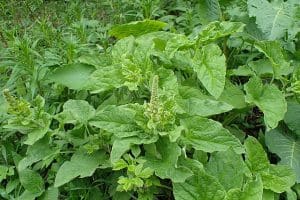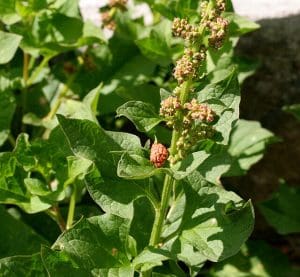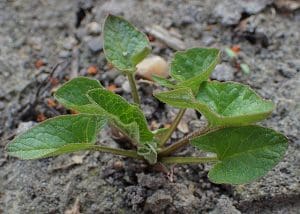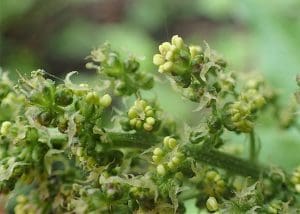Good King Henry / Spring / Summer / Autumn / Edible
Good King Henry originates from the Alps but will be found in much of Europe. Apparently it was the Romans who first brought it to Britain. It’s an easy to identify plant, that makes a great, nutritious spinach substitute.
Common Names
Mercury goosefoot, perennial goosefoot, Lincolnshire spinach, Poor man’s asparagus
Botanical Name
Blitum bonus-henricus
Scientific Classification
– Kingdom: Plantae
– Order: Caryophyllales
– Family: Amaranthaceae
Physical Characteristics of Good King Henry
Leaves
Leaves can grow large to about 10 cm. They are waxy in texture, broad and diamond/triangular in shape with pointed lobes at the base.
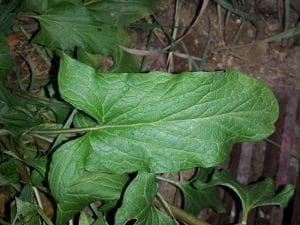
Flowers
Plant will produce a tall, erect flower spike made up of tiny green flowers with 5 sepals. The seeds are a reddish/brown and 2-3 mm in diameter.
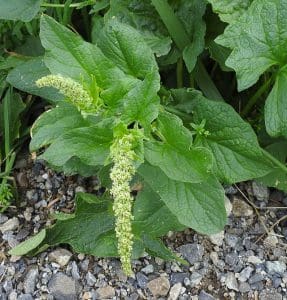
Habitat
A hardy plant that has been cultivated for hundreds of years as a vegetable in gardens. Prefers partial shade and can be found in disturbed, waste ground.
Known Hazards
Good King Henry contains some oxalic acid, but cooking reduces that.
People who are prone to rheumatism, arthritis, gout or kidney stones should generally be careful with foods containing oxalic acid.
Could be Confused with
Could be confused with Maple-leaved Goosefoot (Chenopodium hybridum) which isn’t native to the U.K but will still grow here and does share some similarities. It is edible so not a toxic lookalike. Maple-leaved Goosefoot has thinner stems and more prominent pointed teeth on the leaves.
Lower leaves are slightly reminiscent of Lords-and-Ladies (Arum maculatum) which is not to be eaten. Lords-and-Ladies leaves will have rounded lobes where the leaf meets the stalk, be very glossy and often have black marks on the leaves. Lords-and-Ladies will produce a different flower and a spike of red-orange berries in Autumn.
Edible Uses
Can be used as a great spinach replacement in all kinds of recipes. Good King Henry was commonly cultivated as a vegetable since the bronze age and the fresh young shoots can be cropped in the spring towards early summer and cooked like asparagus.
A relative of quinoa much like Fat Hen and other Goosefoot’s, you can process the seeds and these make a nutritious grain for recipes. Just ensure you are washing thoroughly and removing the chaff.
Notes on Herbal Uses
In the Middle Ages and early modern times, the leaves of Good King Henry were used to treat chronic wounds, ulcers and abscesses.
The plant was used internally to fight worm infections and as a gentle laxative.
Extra notes from the Foragers
Henry IV, who ruled from 1589 to 1610, was a beloved monarch known for his efforts to improve the lives of his subjects, particularly the rural peasantry. He famously said, “I want there to be no peasant in my kingdom so poor that he cannot have a chicken in his pot every Sunday.” This sentiment highlighted his concern for the common people and their well-being.
The plant Good King Henry, named in his honour, reflects this association with providing sustenance to the common people. It was a staple in the diets of rural communities throughout Europe, valued for its versatility and nutritional benefits. The leaves can be used like spinach, the young shoots can be eaten like asparagus, and the seeds can be ground into flour.



